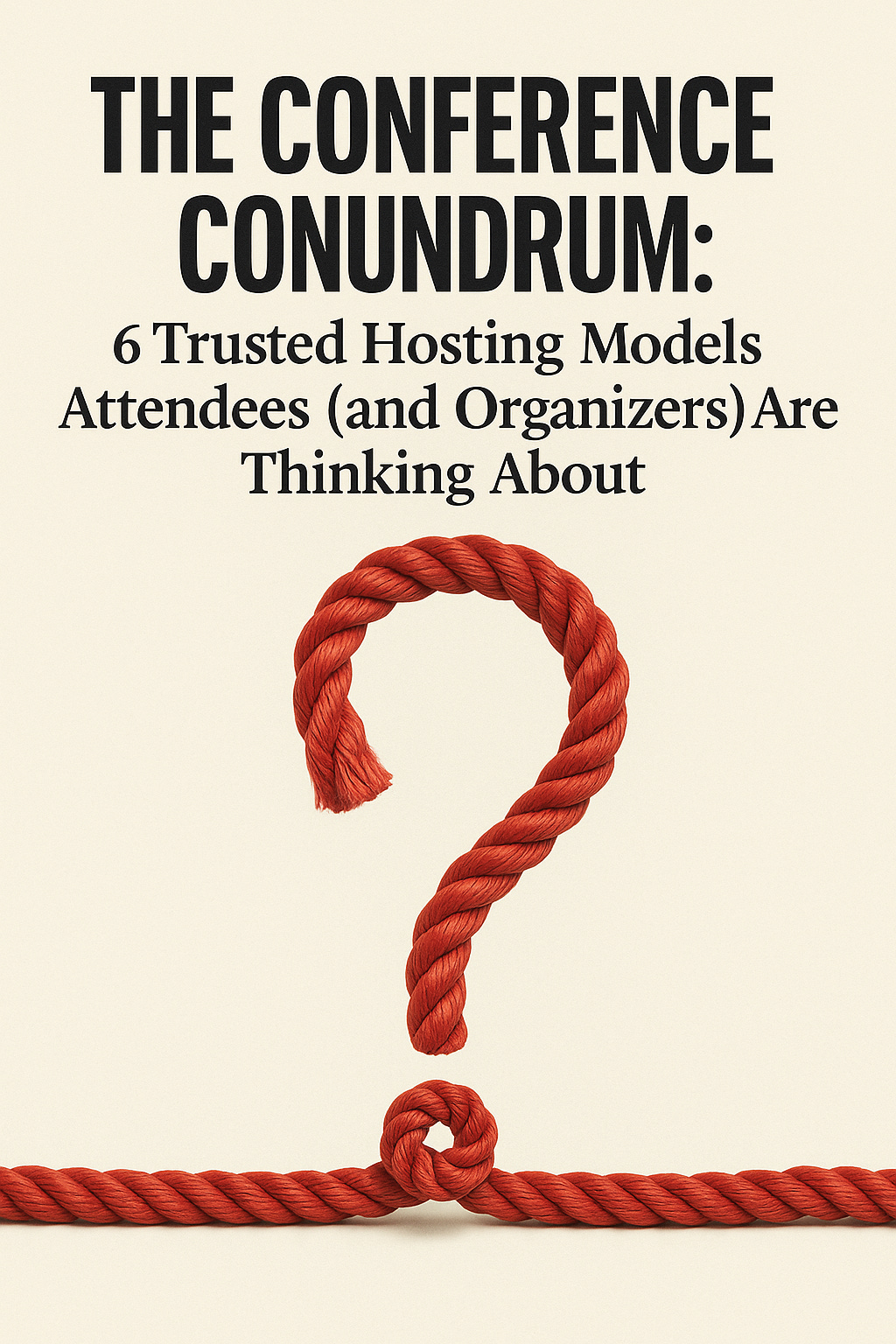The Conference Conundrum
The 6 Trusted Hosting Models—and what they reveal about who gets to gather us now.
You’ve probably felt it. That pause before clicking “Register.” The hesitation before booking the flight. It’s not about the speaker lineup. Or the swag bag. It’s something deeper—more human.
It’s trust.
You’re no longer attending because your company always does, or because the brand name sounds good. You’re asking: Who’s behind this? Will I be heard? Is…




